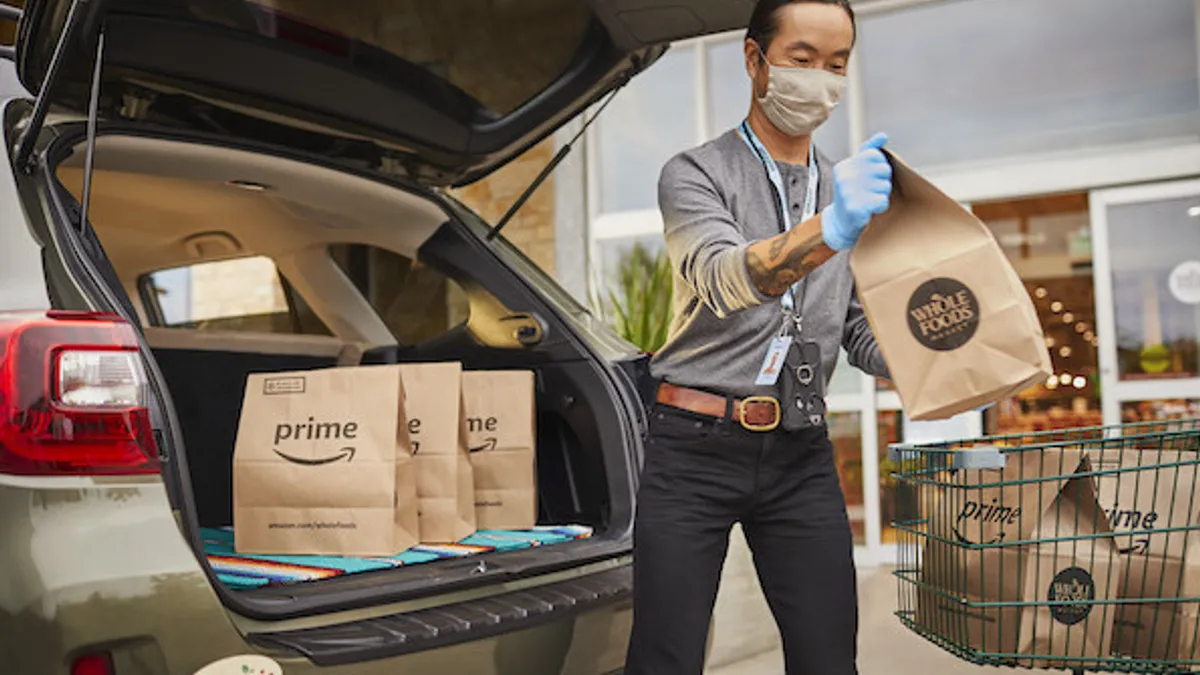Dive Brief:
- U.S. grocery e-commerce sales ticked up 0.9% last month compared with the same month in 2022 to $8.2 billion, according to data released Monday by Brick Meets Click and Mercatus.
- Delivery sales surged 20% in April, while pickup was off 3%.
- Traditional grocers lost ground with mass merchants in the online grocery space during the month, continuing a multi-month trend.
Dive Insight:
The modest rise in overall grocery e-commerce activity in April reversed a sharp drop during the prior month, when online grocery sales plunged 7.6% year-over-year.
Brick Meets Click and Mercatus attributed the sharp increase in delivery sales during April to growth in terms of the number of monthly active users and the value of the average order. In addition, the average order value was up 5% year over year in April for the delivery channel, while the pickup and ship-to-home segments were down by the same measure, according to the firms’ report, which is based on a survey of 1,746 adults the firms conducted on April 28 and 29.
The data underscores the mounting pressure mass merchants — a group that includes retailers like Target and Walmart — are exerting on grocers in the competition for people’s online grocery business.
Across formats, the repeat intent rate fell by more than five percentage points YoY, to 58%. But while the metric, which measures how likely online grocery shoppers are to place a second order with the same merchant in 30 days, was off by less than 3 percentage points for mass merchants it fell by almost 9 percentage points in April for grocers.
The research also found that while delivery sales rose by a large margin in April, the repeat intent rate for the channel was down significantly compared with delivery services run by mass merchants.
“Given that customers vote with their wallet, the expanding gap in repeat intent between Mass and Grocery should be a red flag that warrants grocers re-evaluate all aspects of the customer experience,” Sylvain Perrier, president and CEO of Mercatus, said in a statement. “Customers’ expectations continue to evolve based on past experiences, which means it’s vital that grocers continue to improve the execution of various aspects, whether that’s a more personalized experience, fewer out-of-stocks, or shortened wait times.”
Online grocery sales accounted for 12.1% of overall grocery spending in April, in line with the figure recorded in April 2022, according to the research. When the ship-to-home segment — which includes orders sent by common carriers like FedEx and UPS — is excluded, digital sales reflected 10% of grocery industry sales, a year-over-year increase of 0.4%.











